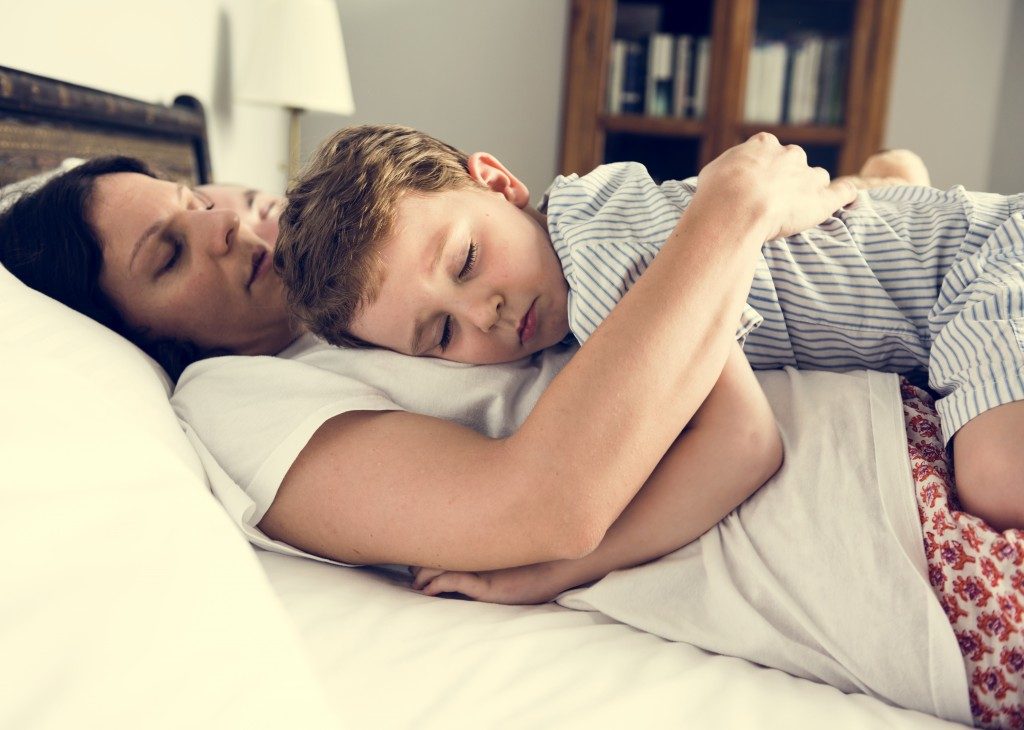Co-sleeping is an idea that has been around for as long as people started having children. It may ring a bell as something new to the ear, but it is actually an old parenting practice that offers substantial benefits.
Co-sleeping is an old parenting practice. It has been called many names, but in simple terms, it is about sleeping with your baby on the same bed or, at least, sleeping right next to your baby – about an arm’s reach. If you are planning to do such practice, make sure that your bed is right for it. Before you buy bedroom furniture online, consider your plans for co-sleeping and how it will impact your bedroom design.
Different Ways of Co-Sleeping
The term co-sleeping was introduced when attachment parenting advocates started encouraging everyone to be beside their children all through the night and enjoy its substantial benefits. Different families may follow a different practice, but it still is, in essence, co-sleeping.
- Bed-Sharing -This practice is sleeping right next to the baby, sharing the family bed.
- Sidecar Arrangement -This practice is encouraged for most, especially in Western countries. In this case, the baby’s crib or bassinet is attached right next to the parents’ bed so the mother will have easy access to the baby.
- Shared Room – Co-sleeping is not taken literally. In some ways, it could mean that you are just within an arm’s reach to your baby. So, sleeping the baby in another bed within the same bedroom could still be considered as co-sleeping.
Although there are criticisms about co-sleeping, specifically that it is one of the main causes of SIDS or Sudden Infant Death Syndrome, many developing countries firmly believe of its many benefits and, thus, embrace the idea altogether.
For the most part, co-sleeping offers these five main advantages:
- The emotional bond between mother and baby is a lot stronger, and it transcends the baby’s relationship with others as well.
- It promotes exclusive breastfeeding.
- Babies maintain a more stable body temp when they stay close to an adult’s body.
- Babies go to sleep faster and stay asleep for longer than when they are in a separate room.
- Most mothers report they well-rested when they co-sleep their infant because they don’t have to get up from the bed countless times to check on the baby.
Safe Co-Sleeping Practices
It has to be pointed out, however, that not all co-sleeping arrangements are harmless. There are safety precautions parents should take to ensure their baby’s health and wellbeing. Here are some tips to keep co-sleeping safe:
- Never co-sleep with your baby when you are under the influence of prohibited drugs or alcohol, and if you are taking any medicines that might induce deep sleep for you.
- Always place the baby on his back to sleep.
- Never co-sleep in soft bedding, waterbed, or beanbag. The mattress should be firm; the beddings must be tight-fitting, and there must be no loose pillows or stuffed toys near the baby’s head.
Co-sleeping is an ideal practice for parents who want to stay close to their babies as much as possible. Who could resist the treat of waking up next to an innocent smile of your lovely baby every single day? But if you do decide to follow this arrangement, make sure that you have taken into consideration your baby’s safety at all times. That’s only when you can really take advantage of its supposed benefits if you are able to keep the baby’s wellbeing secured.

